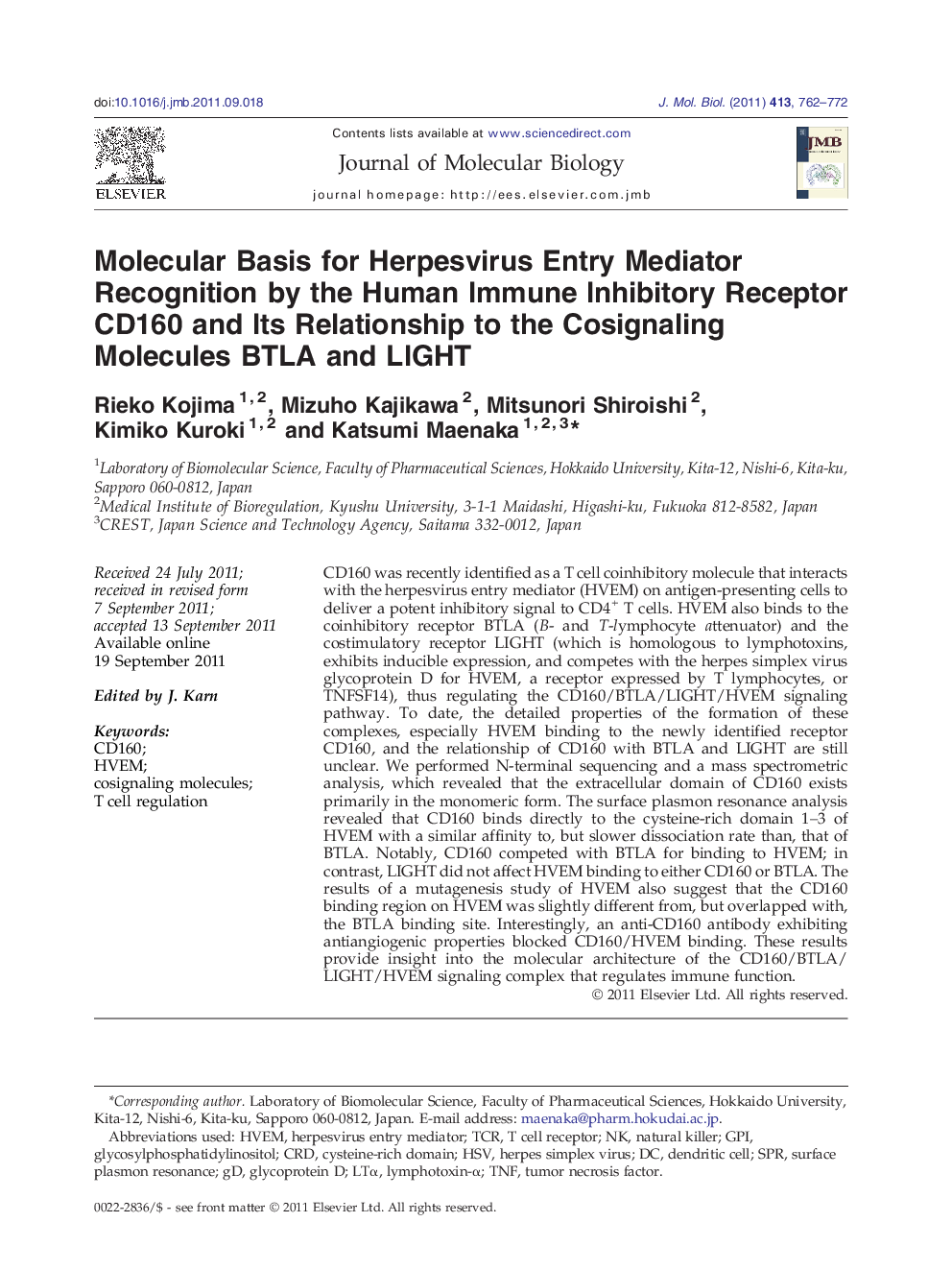| کد مقاله | کد نشریه | سال انتشار | مقاله انگلیسی | نسخه تمام متن |
|---|---|---|---|---|
| 2184952 | 1095951 | 2011 | 11 صفحه PDF | دانلود رایگان |

CD160 was recently identified as a T cell coinhibitory molecule that interacts with the herpesvirus entry mediator (HVEM) on antigen-presenting cells to deliver a potent inhibitory signal to CD4+ T cells. HVEM also binds to the coinhibitory receptor BTLA (B- and T-lymphocyte attenuator) and the costimulatory receptor LIGHT (which is homologous to lymphotoxins, exhibits inducible expression, and competes with the herpes simplex virus glycoprotein D for HVEM, a receptor expressed by T lymphocytes, or TNFSF14), thus regulating the CD160/BTLA/LIGHT/HVEM signaling pathway. To date, the detailed properties of the formation of these complexes, especially HVEM binding to the newly identified receptor CD160, and the relationship of CD160 with BTLA and LIGHT are still unclear. We performed N-terminal sequencing and a mass spectrometric analysis, which revealed that the extracellular domain of CD160 exists primarily in the monomeric form. The surface plasmon resonance analysis revealed that CD160 binds directly to the cysteine-rich domain 1–3 of HVEM with a similar affinity to, but slower dissociation rate than, that of BTLA. Notably, CD160 competed with BTLA for binding to HVEM; in contrast, LIGHT did not affect HVEM binding to either CD160 or BTLA. The results of a mutagenesis study of HVEM also suggest that the CD160 binding region on HVEM was slightly different from, but overlapped with, the BTLA binding site. Interestingly, an anti-CD160 antibody exhibiting antiangiogenic properties blocked CD160/HVEM binding. These results provide insight into the molecular architecture of the CD160/BTLA/LIGHT/HVEM signaling complex that regulates immune function.
Graphical AbstractFigure optionsDownload high-quality image (129 K)Download as PowerPoint slideHighlights
► CD160 is a T cell coinhibitory molecule and interacts with HVEM.
► HVEM also binds to regulatory molecules of the CD160/BTLA/LIGHT/HVEM signaling.
► The extracellular domain of CD160 exists primarily in the monomeric form.
► CD160 competed with BTLA for binding to HVEM.
► An anti-CD160 antibody harboring antiangiogenic activity blocked CD160/HVEM binding.
Journal: Journal of Molecular Biology - Volume 413, Issue 4, 4 November 2011, Pages 762–772